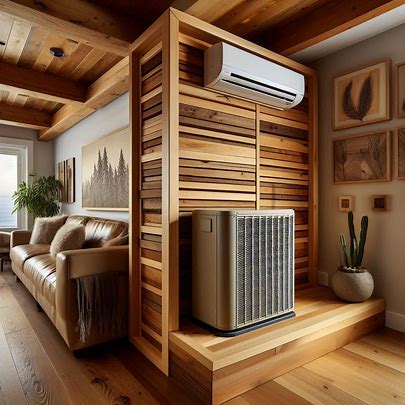
Cooling technology has come a long way, offering both functionality and aesthetics. Architects and interior designers now prioritize integrating air conditioning units seamlessly into modern spaces without disrupting visual harmony.
Choosing the right air conditioner installation service, like Advanced Clean Air, is crucial in balancing comfort and design. Modern HVAC solutions allow customization that blends with interiors in residential or commercial settings.
Blending Cooling Systems with Interior Design
Air conditioning units no longer have to be eyesores. Designers incorporate them subtly by using innovative concealment techniques. Recessed ceiling vents, decorative casings, and custom-built enclosures ensure that cooling systems do not interfere with aesthetics. Whether designing for a contemporary apartment or a heritage home, there are multiple ways to integrate air conditioning seamlessly.
Concealed Ducts for Minimalist Appeal
Concealed duct systems are perfect for those who prefer a sleek, uninterrupted look. These systems run through ceilings or walls, distributing air evenly without visible vents or bulky units. They allow architects to maintain clean lines in modern interiors while ensuring effective cooling. This solution is particularly popular in high-end residential buildings and luxury hotels, where aesthetics play a crucial role.
Custom Covers and Decorative Panels
Custom covers transform standard AC units into stylish elements. Whether using wood, metal, or fabric, these coverings help the units blend with furniture and decor. Some homeowners choose to incorporate air conditioning vents into bookshelves or wall paneling, making them almost invisible to the untrained eye. This approach ensures that practicality does not compromise style.
Split Systems with Stylish Designs
Wall-mounted split systems come in various finishes and colors, complementing interiors rather than clashing with them. Some manufacturers even offer transparent or mirrored designs, which blend seamlessly with modern decor. These units work well in open-concept spaces, offering efficiency and an aesthetically pleasing presence.
Architectural Considerations for HVAC Integration
Planning for air conditioning early in the design phase prevents retrofitting challenges. Built-in alcoves, concealed vents, and strategic placement enhance the efficiency and aesthetics of HVAC installations. Architects work closely with HVAC specialists to ensure that cooling systems align with the building’s overall design philosophy.
Incorporating Cooling Systems into Smart Homes
Smart home technology allows air conditioning units to function seamlessly with automated controls. Integrating HVAC with smart thermostats and AI-driven climate control ensures efficiency while maintaining a clutter-free environment. Users can adjust cooling settings remotely, optimizing energy consumption while maintaining comfort. Voice-controlled assistants and mobile apps further enhance the user experience, making cooling more intuitive.
Natural Ventilation as a Complement
Pairing air conditioning with natural ventilation techniques reduces reliance on artificial cooling. Strategic window placements, cross-ventilation, and passive cooling methods create a balanced indoor climate. Using sustainable design principles, such as green roofs and thermal insulation, further enhances cooling efficiency while reducing energy costs.
Choosing the Right AC Unit for Your Space
Every space has different cooling needs. Compact rooms benefit from ductless mini-split systems, while large areas require central air conditioning. Considering noise levels, energy efficiency, and aesthetics ensures a well-integrated system. Homeowners and businesses should also explore eco-friendly options, such as inverter technology and refrigerants with a lower environmental impact.
Designing for Different Types of Spaces
The approach to integrating air conditioning varies depending on the type of space. For residential properties, aesthetics often take precedence, leading to concealed or stylishly designed units. In commercial spaces, functionality is key, focusing on centralized cooling and energy efficiency. Industrial buildings require high-performance cooling systems that can handle larger capacities without compromising design elements.
Future Trends in Air Conditioning Design
Innovation in HVAC technology continues to evolve. Manufacturers focus on creating ultra-quiet, compact, and aesthetically appealing units that integrate seamlessly into interiors. The rise of energy-efficient systems, such as solar-powered AC units and geothermal cooling, offers sustainable solutions without compromising style. As technology advances, the fusion of smart controls and minimalist design will shape the future of air conditioning integration.
READ ALSO: Enhancing Artistic Spaces Through Insulation and Design
Conclusion
Integrating air conditioning into interior design is no longer a challenge. With innovative solutions like concealed ducts, decorative panels, and smart controls, cooling systems can enhance rather than disrupt aesthetics. A thoughtful approach ensures that comfort and design go hand in hand. A well-planned HVAC system contributes to efficiency and style for homes, offices, or commercial spaces.
